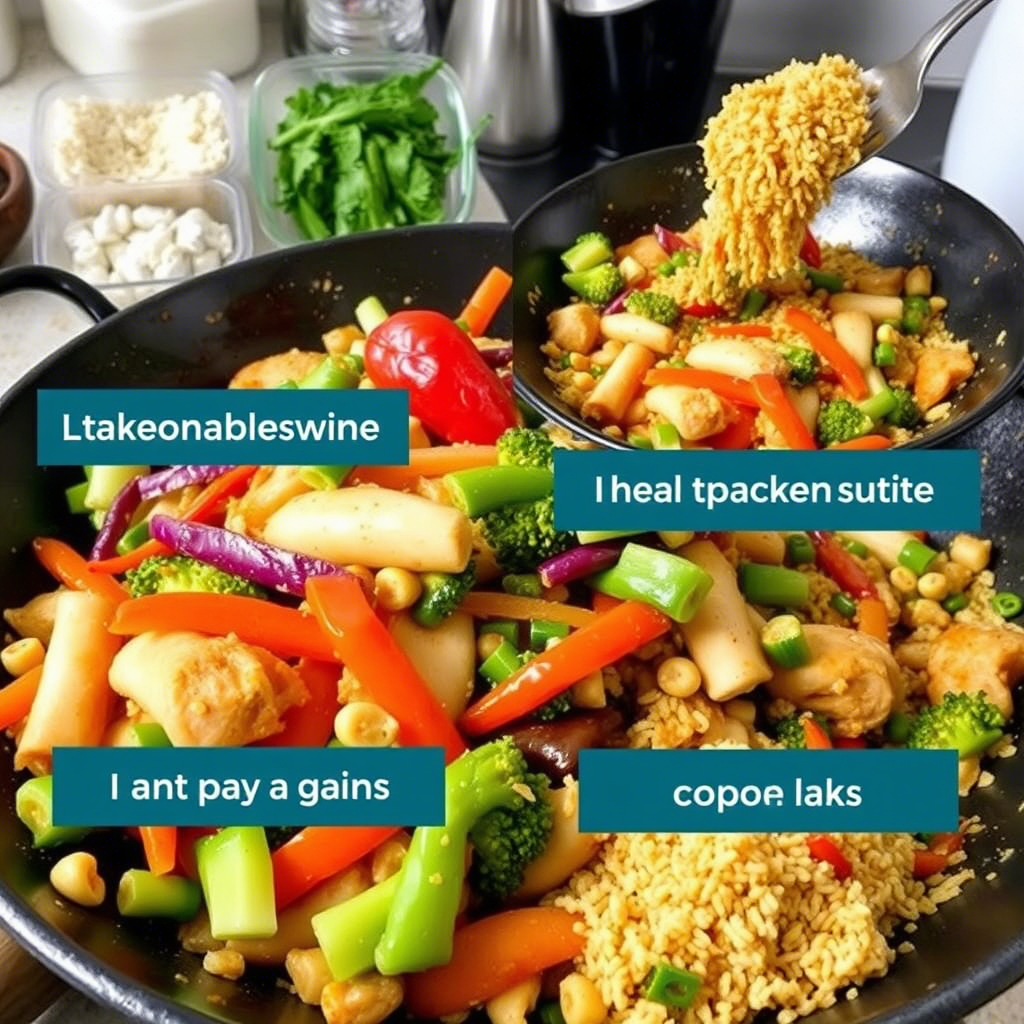Have you ever found yourself standing in front of an almost-empty fridge, wondering how to make the most out of what little you have? The struggle is real, especially when budgets are tight or life gets busy.
But here’s the good news: stretching ingredients doesn’t just save money—it can also spark creativity and reduce food waste. In this article, we’ll explore practical strategies to maximize your yield from everyday ingredients, helping you cook smarter, not harder.
Whether you’re a seasoned chef or a beginner in the kitchen, these tips will empower you to create delicious meals while making every ingredient count.
1. Start with Smart Planning: Your Key to Efficiency
Before diving into cooking, it pays to plan ahead. A well-thought-out grocery list and meal schedule can prevent overbuying and ensure that nothing goes to waste. For instance, if you buy a head of cabbage, think about using it across multiple dishes—like coleslaw one day and stir-fried noodles the next.
Here’s a simple tip: group versatile ingredients together. Vegetables like carrots, onions, and potatoes can be used in soups, stews, salads, and casseroles.
Proteins such as chicken breast or tofu can serve as the base for several meals throughout the week. By planning meals around multi-purpose items, you’ll stretch their value further and avoid letting them spoil.
Did You Know? According to the United Nations, nearly one-third of all food produced globally is wasted each year. With better planning, you can do your part to combat this issue while saving money!
2. Master Batch Cooking: More Meals for Less Effort
Batch cooking might sound intimidating, but it’s simpler than you think. Preparing large quantities of staples like rice, pasta, or roasted vegetables at once allows you to use them creatively in various recipes throughout the week.
For example, cooked quinoa can become the foundation for both lunch bowls and dinner burritos. Similarly, roasted chickpeas can transform into crunchy snacks or salad toppings.
To make batch cooking even more efficient:
- Freeze leftovers : Divide portions into freezer-safe containers so they’re ready whenever you need them.
- Repurpose scraps : Save vegetable peels, herb stems, and other trimmings to make homemade stock—a flavorful addition to any dish.
By doubling up on preparation time, you reduce effort later and increase the lifespan of perishable goods. It’s a win-win!
3. Embrace Versatile Recipes: Turning Basics into Gourmet Dishes
Sometimes, all it takes is a little creativity to turn basic ingredients into something extraordinary. Take eggs, for example—they can star in omelets, frittatas, scrambles, or even desserts like custard. Or consider beans, which can be mashed into dips, turned into veggie burgers, or added to soups for extra protein.
Another great way to stretch ingredients is by incorporating “stretchers”—foods that bulk up recipes without compromising flavor.
Think oats in meatloaf, breadcrumbs in meatballs, or spinach blended into smoothies. These additions not only enhance texture but also help extend the quantity of your main ingredients.
Let me share a personal story: When I was learning to cook on a budget, I discovered the magic of adding grated zucchini to pancake batter.
Not only did it add moisture and nutrients, but it also stretched the flour further, allowing me to feed my family with fewer resources.
4. Preserve What You Can’t Use Immediately
Even with careful planning, there may still be times when you find yourself with excess produce or leftover ingredients. That’s where preservation comes in! Techniques like freezing, pickling, and drying allow you to preserve food for future use while maintaining its quality.
For example:
- Freeze herbs in olive oil cubes for easy seasoning later.
- Turn surplus fruit into jams or compotes.
- Dry mushrooms or peppers to use as spices or garnishes.
These methods not only prevent waste but also give you access to seasonal flavors year-round. Plus, homemade preserved foods often taste better and cost less than store-bought alternatives.
5. Inspire Yourself with Minimalist Mindset
At its core, stretching ingredients is about adopting a minimalist mindset in the kitchen. Instead of focusing on what you lack, celebrate what you have and let it inspire you.
Need proof? Look no further than traditional cuisines worldwide, many of which were born out of necessity. Italian risottos, Indian curries, and Mexican salsas all rely on simple yet resourceful combinations of staple ingredients.
Remember, necessity breeds innovation. So, the next time you face a sparse pantry, view it as an opportunity to experiment. Try reinventing old favorites or inventing new ones. Who knows—you might stumble upon your signature dish!
Conclusion
Stretching ingredients isn’t just about saving money; it’s about cultivating a mindful approach to cooking. From smart planning and batch cooking to embracing versatile recipes and preserving leftovers, the techniques outlined above can revolutionize the way you prepare meals.
Not only will you enjoy greater efficiency, but you’ll also contribute to reducing food waste and living sustainably.
Now it’s your turn! Which strategy resonates with you the most? Have you already tried some of these methods, or are you eager to test them out?
Share your thoughts in the comments below, and don’t forget to tag us if you post your creations online. Together, let’s make the most of every ingredient and inspire others to join the movement toward mindful eating. Happy cooking!

Thayná Alves is an influential digital content creator who has carved out a significant space in the realms of technology, finance, and entrepreneurship. Through her blog, Newbacker.com , she stands out as an authentic and accessible voice for individuals seeking practical information about investments, innovation, and emerging trends in the financial market.

